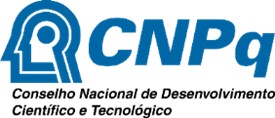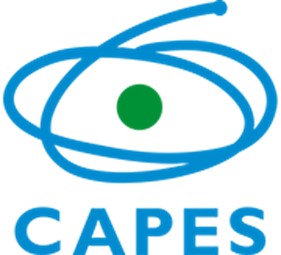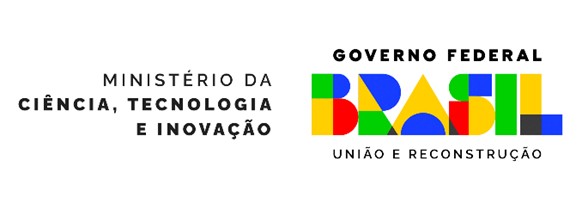EDIÇÃO ATUAL vol. 48, No. 9, 2025
Microscopia e microanálise: ferramentas estratégicas para a inovação em ciência e tecnologia de materiais avançados
Giovanna MachadoI ; Lia Carolina MedeirosII
; Lia Carolina MedeirosII ; Paula M. JardimIII
; Paula M. JardimIII ; Suzana B. PeripolliIV
; Suzana B. PeripolliIV
http://dx.doi.org/10.21577/0100-4042.20250244
Total access: 212
Simple and green production of lignin nanoparticles using ethanol-water mixtures and ultrasonication
Eduardo G. F. de AlmeidaI; Lucas G. P. TienneII; Braulio S. ArchanjoIII; Felipe S. AlencastroIV ; Tiago A. BalbinoI; Renata A. SimãoI*
; Tiago A. BalbinoI; Renata A. SimãoI*

Two solvent compositions (70 and 90% ethanol, v/v in water) and varying sonication times (0-2 h) were evaluated to investigate their effects on lignin nanoparticle formation, morphology, and size.
http://dx.doi.org/10.21577/0100-4042.20250223
In situ Fe doped anodized TiO2 nanotubes: characterization and photocurrent response
Gustavo R. S. PaulaI; Andréia R. C. CarneiroII; Leandro A. SantosIII; Dalila C. SicupiraII; Rosa M. R. JunqueiraI*

The Graphical Abstract consists of three scanning electron microscopies obtained in the analysis of TiO2 nanotubes synthesized in the presence and absence of iron ions.
http://dx.doi.org/10.21577/0100-4042.20250224
Scanning electron microscopy: an essential tool in the investigation of cement for oil wells
Rafael A. VenturaI; Eduardo J. C. LinsII; Júlio C. O. FreitasI; Antonio E. MartinelliII,*

The graphical abstract illustrates the use of scanning electron microscopy (SEM) to investigate oil well cement microstructures. Representative SEM images reveal hydration products, carbonation phases, and morphological changes under various conditions.
http://dx.doi.org/10.21577/0100-4042.20250227
O que o potencial de circuito aberto pode nos informar sobre a resistência à corrosão de ligas de alumínio?
João Victor de S. AraujoI,* ; Zehbour PanossianII
; Zehbour PanossianII ; Hercílio G. MeloIII
; Hercílio G. MeloIII ; Isolda CostaI
; Isolda CostaI

The evolution of open circuit potential (OCP) over time was monitored to evaluate corrosion resistance of aluminium alloys. Localized attack occurred even at more noble potentials. This highlights the limitations of using OCP as a standalone technique for corrosion resistance assessment.
http://dx.doi.org/10.21577/0100-4042.20250229
Avaliação da eficiência fototérmica de óxidos de grafeno reduzidos com diferentes dimensões
Isabela A. A. BessaI; Mikaelly O. B. SousaI; Fernanda D. MarquesII; Elisa Q. C. da CostaI; Ana Beatriz C. SouzaI; Dayenny L. D'AmatoI; Camille C. de MelloI; Diego O. da CostaI ; Wilson S. NascimentoI; Johnnys S. HortêncioI; Bráulio S. ArchanjoII; Célia M. RonconiI,*
; Wilson S. NascimentoI; Johnnys S. HortêncioI; Bráulio S. ArchanjoII; Célia M. RonconiI,*

Different exfoliation methods were applied to obtain reduced graphene oxide (rGO) with varied lateral sizes. Photothermal studies under near-infrared (NIR) irradiation showed efficient heat generation. Sheet size had minimal influence on the photothermal performance.
http://dx.doi.org/10.21577/0100-4042.20250231
Electrospun polyamide 6 nanofibers as controlled delivery system for enhanced photodynamic therapy
Juliana PirajáI; Aline R. F. TeixeiraII; Irina M. FactoriIII; Anderson F. SepulvedaI; Luiz F. G. SetzIV ; Anderson O. RibeiroI; Wendel A. AlvesI,*
; Anderson O. RibeiroI; Wendel A. AlvesI,*

Electrospun polyamide 6 (PA-6) nanofibers loaded with methylene blue for topical photodynamic therapy.
http://dx.doi.org/10.21577/0100-4042.20250238
Microwave-assisted hydrothermal synthesis and characterization of TiO2 nanoparticles and evaluation of their photocatalytic performance
Rafael G. Ferreira; Tamara P. da Silva; Mariandry D. V. R. Rodriguez; Jairo L. Rodrigues; André S. Afonso; Márcio C. Pereira;
Douglas S. Monteiro

Microwave-assisted hydrothermal synthesis of TiO2 nanoparticles using titanium(IV) isopropoxide (TIP) and tetramethylammonium hydroxide (TMAH) yields anatase-phase nanostructures. One- and two-step heating produced particles with different morphologies and surface areas. Both samples demonstrated high photocatalytic efficiency in degrading rhodamine B under ultraviolet-visible (UV) light.
http://dx.doi.org/10.21577/0100-4042.20250239
Effects of alkali ion doping on microstructure and morphology of rutile titanium dioxide thin films
Felipe L. N. SousaI,# ; Lizeth Carolina Mojica-SánchezI,II,#
; Lizeth Carolina Mojica-SánchezI,II,# ; Denilson Vasconcelos FreitasI,#
; Denilson Vasconcelos FreitasI,# ; Larissa G. C. SilvaI,II
; Larissa G. C. SilvaI,II ; Iasmin B. CavalcantiI
; Iasmin B. CavalcantiI ; Luana B. C. OliveiraI,II
; Luana B. C. OliveiraI,II ; Giovanna MachadoI,*
; Giovanna MachadoI,*

In this research, a TiO2 film matrix was prepared, and the effects of an alkali metal doping process (K, Rb, and Cs) were evaluated by monitoring its morphological, electrical, and structural evolution. The aim was to facilitate green hydrogen production and solar energy conversion.
http://dx.doi.org/10.21577/0100-4042.20250240
Evaluation of L929 cell adhesion and morphology on nanoengineered titania using scanning electron microscopy: a refined sample preparation protocol
Audrey N. de Andrade ; Jaqueline R. da Silva; Luzia R. L. Santos
; Jaqueline R. da Silva; Luzia R. L. Santos ; Victor H. F. Camurça; Jeann F. Branco-Junior; Mércia L. Oliveira; Giovanna Machado
; Victor H. F. Camurça; Jeann F. Branco-Junior; Mércia L. Oliveira; Giovanna Machado

A sample preparation protocol for scanning electron microscopy (SEM) analysis of nanostructured biomaterials with L929 cells was optimized, enabling satisfactory visualization of cell morphology and adhesion.
http://dx.doi.org/10.21577/0100-4042.20250241
Mineralogical and microstructural analysis of pottery fragments from the Bitoca I archaeological site (Brazilian Amazon)
Bruno A. M. FigueiraI,* ; Brenda B. de AzevedoII; Helena P. LimaII; Bráulio S. ArchanjoIII; Erasmo B. S. FilhoII; Pabllo H. C. dos SantosIV; José F. BerredoV; Marcondes L. da CostaI
; Brenda B. de AzevedoII; Helena P. LimaII; Bráulio S. ArchanjoIII; Erasmo B. S. FilhoII; Pabllo H. C. dos SantosIV; José F. BerredoV; Marcondes L. da CostaI

This multi-technique archaeometric study of Bitoca I ceramic fragments reveals sophisticated Pre-Columbian production methods employing local clays with quartz/feldspar and plant temper (cariapé), fired at ≤ 850 °C. Analytical data confirm both culinary use (Ca-P-Mg residues) and deliberate material selection, demonstrating advanced technological knowledge. The coexistence of different tempers highlights the diversity of Amazonian ceramic traditions and provides new insights into regional socio-technical practices.
http://dx.doi.org/10.21577/0100-4042.20250242
Dimensional analysis of graphene oxide using a computational segmentation model applied to microscopy images
Karoline C. B. MartinsI; Jéssica M. M. LuzardoI; Tamires M. MachadoI; Alexander M. da SilvaI; Gilson A. GiraldiII; Perfilino E. F. JuniorIII; Kary Ann D. C. O. GautherotII; Joyce R. AraújoI,*

The sheet height, lateral size, number of layers, and presence of the oxygen functional group in graphene oxide (GO) intended for certified reference material (CRM) samples were obtained using advanced techniques for physicochemical and dimensional analysis.
http://dx.doi.org/10.21577/0100-4042.20250243
On-line version ISSN 1678-7064 Printed version ISSN 0100-4042
Qu�mica Nova
Publica��es da Sociedade Brasileira de Qu�mica
Caixa Postal: 26037
05513-970 S�o Paulo - SP
Tel/Fax: +55.11.3032.2299/+55.11.3814.3602
Free access





